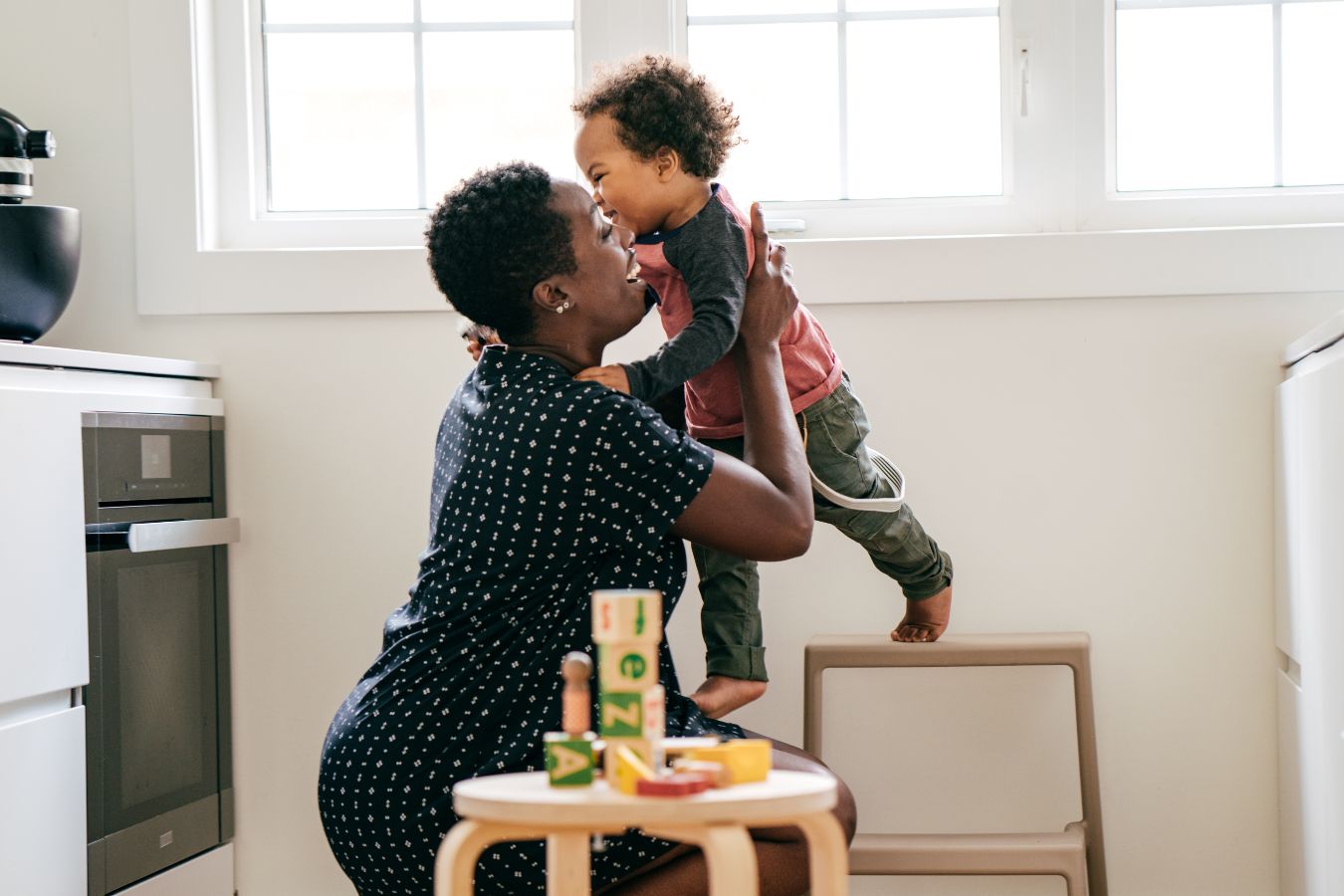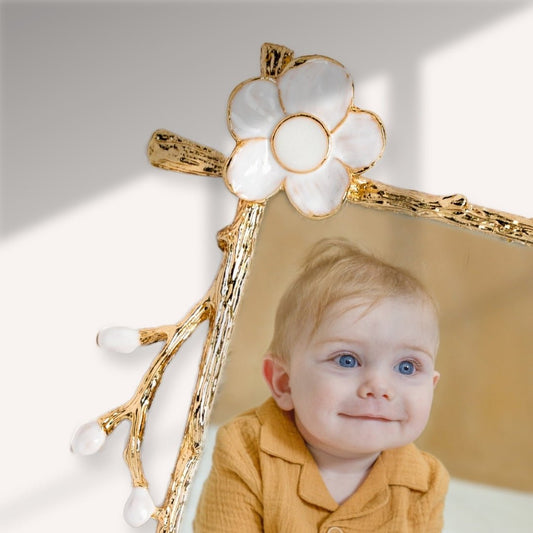The Magic to Ending Tantrums
By: Dr. Nikki Sharoupim, PsyD

I know you’re probably looking for the magic words to end tantrums forever. And believe me, I wish I could give them to you. While you may not be able to make the tantrums disappear
, there are a few things you can do to minimize them and respond effectively while they are happening.
- Distraction – The more focus there is on the trigger, the more the kiddo will get stuck in a spiral. Distract them with a different activity or thought. Try to move them to a different room (if possible).
- Label emotions (after the tantrum) – This will help your kiddo start to build emotional intelligence and social emotional skills. Start by asking what they think they were feeling and label what you were noticing (e.g. I noticed that your voice got loud and your breathing got quick. When that happens to me, I usually feel angry).
- Give choices when possible and appropriate- Think of the times when it’s okay to give some power and independence to your kiddo. For example, maybe your kiddo can pick between two different pajamas for bedtime.
Prepare for transitions – Transitions can be tricky for kids (especially when you’re stopping a preferred activity and moving to something that is not as fun or interesting). Visual cues can be helpful (think timers). Let your kiddo know how much more time they have and what they can expect next. This may be an area that you can give back some independence so they feel that they’re part of the decision making process (e.g. How much more time do you feel you need to play? Okay 10 more minutes to play and then we’re going inside).
Calming the Chaos Mid-Tantrum

We’re going to take a quick step back and do a mini lesson on the fight-flight response. When your body is calm, it is easier for you to think, move freely, and talk with others. Your heart is beating at a regular pace and your breathing is normal.
When you’re stressed, uncomfortable, or irritated, you may notice that these things become more difficult, your heart is beating much faster, and your breathing may become more shallow or quicker. This is your fight or flight response and it’s what is triggered when there is a perceived harmful or stressful event. Notice that I said perceived.
The calm-down strategy you find successful will depend on a variety of things including:
- Your kiddo’s age
- Their Developmental level
- The Trigger
- The environment you’re in
- The individuals around you
Let’s dive into some specific strategies that you may want to try when your kiddo is throwing a tantrum:
1. Deep breaths.
Remember from the previous blog we talked about deep breaths? Just saying, “now let’s close our eyes and take some breaths” might work for some, but it may irritate others. Think about when you’re feeling frustrated and someone ‘suggests’ that you do something; don’t you sometimes feel more likely to do the opposite just out of spite? Well, your child is no different. Simply saying, “let’s take some deep breaths” may be frustrating to hear. Remember, your kiddo is little; make it fun and distracting. Below are some examples of helping your kiddo take deep breaths (without them realizing what you’re doing).
a. Smelling Flowers

Pretend to hold a flower in your hand and ask your kiddo to close their eyes, take a big breath in, and pretend to smell the flower. You can try to continue to distract them by asking what type of flower they pretended it was, what it smelled like, etc. If you have access to a real flower, use it!
b. Square Breathing

This is a personal favorite for my 4-year-old. Draw a square or grab something shaped like a square. Using your finger or your little one’s finger to trace, start at the bottom left corner and trace the edge of the square up to the top left corner. As you trace up, take a breath in. Hold it for 3 seconds. As you trace from left to right across the top, breathe out. Now trace from the top right down to the bottom right and take another breath in. Hold it for 3 seconds. Finally, trace from the bottom right back to the bottom left and breathe out. This exercise may take a little practice and might be more difficult for very young children to grasp. However, anything that distracts them and helps them slow down and take a breath is a step in the right direction.
c. Blowing Out Candles

Hold up a few fingers and pretend they are candles. Ask your kiddo to practice blowing out candles with a big breath. When they “blow” the candles out, put one finger down at a time.
2. Play with play doh, pop-its, stress ball

From my own experience, I know that fidgeting with something squishy helps me calm down. Sometimes, I count how many bubbles are on a pop-it, and other times, I make a game out of popping them, seeing how many I can pop at once. Before I know it, my body is calmer because I’ve given myself the sensory input I need to distract my mind.
3. Splash water

Another favorite for my 4 year-old. It’s as simple as it sounds. Splash water on their face. We count down from “3,” gather a little water, and I wipe it down my kiddo’s face. We add a little humor with “oops, got ya more wet than I wanted!” Sometimes, if I can tell that he’s in a playful mood, I’ll throw the towel on his head - just to get a little laugh and to get his mind clear and off of the tantrum.
4. Music

Let them listen to their favorite song to bring a sense of calm.. C’mon, think of the times that you threw your headphones in and tried to get absorbed in your music when you felt like you were about to lose it.
5. Positive Opposites

This is a big one. Think about how many times your kid hears “no, no, no” in a 24-hour period. Hearing “no” that many times could be a trigger and could cause your kiddo to challenge you and push back. Also, telling them “no” doesn’t exactly tell them what they can do or what they should be doing - simply saying no leaves the rest up for interpretation. So let’s think of a way you can say “no” without actually saying it.
Instead of : “don’t throw that ball”
Say: “that’s an outside toy. Please find a different toy for now.” And if you’re okay with them going outside at that moment you could say, “that’s an outside toy, please take it outside now.”
Let’s try another:
Instead of: “No candy now!”
Say: We can have candy after dinner/tomorrow. Now, you can have fruit/ biscuits, etc (whatever they can have) at an appropriate time they can have it.
Last example:
Instead of: “don’t stand on the chair”
Say: “Please, sit down. Chairs are for sitting”
You’re looking for the “yes” while also telling your little one what they can do. Think about some of the common “no’s” you use throughout the day and practice transforming them into a positive opposite.
The Calm After the Chaos
The storm is over, now what? You’re probably feeling flustered, your kiddo probably has tears and boogers all over their face, you both feel drained and don’t know where to go from here.
*Connect before you correct*

When you have a bad day, do you prefer to hear “stop crying and get over it” or would you rather receive a big hug and have someone tell you they are there for you no matter what?
You are more likely to listen to advice from a person you have a connection with, right? While you may want to start correcting your kiddo’s behaviors as soon as their body is calm, now is not the time. You want to show your kiddo that you are there to support them through hard times and that having a hard time is okay; Now is a good time to sit and share some information to help your kiddo feel safe. You don’t want them to walk away feeling “bad” or ashamed. You want them to know that you are a safe and trusted person in their life and you can handle them in the best and the worst of times. Let them know that they are a good person who was having a hard time – and everyone has hard times.
Repeat after me, “my kid is having a hard time, they are not being bad.”

Written by: Dr. Nikki Sharoupim, PsyD.
Dr. Nikki Sharoupim, PsyD. earned her doctoral degree from the Graduate School of Applied and Professional Psychology at Rutgers University. Dr. Sharoupim has extensive experience in the therapeutic school setting. Using cognitive-behavioral techniques, Dr. Sharoupim’s expertise is on the social, behavioral, and emotional wellness of children. Dr. Sharoupim is also known as Dr. Mom - as she is now a full-time mom of a four-year-old and 19-month-old which she happily stays at home to raise. She is also a blog writer for mammasliquidlove.com, her favorite breast milk jewelry company :)




















